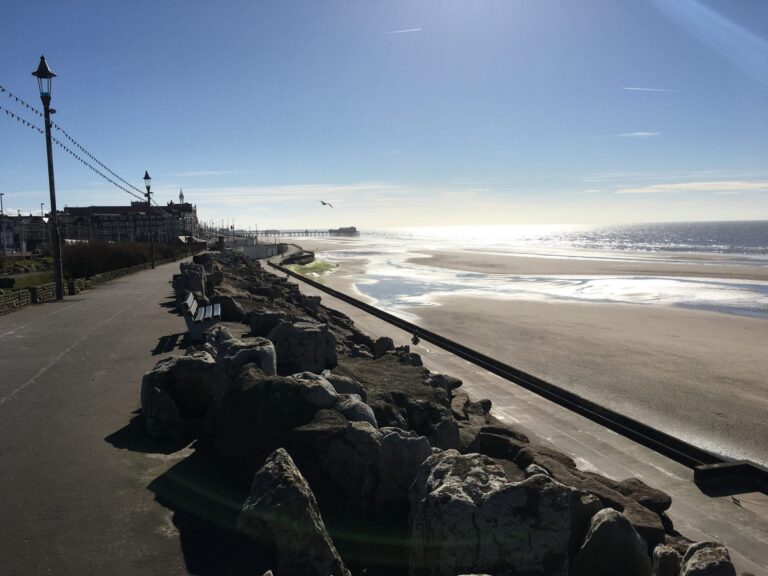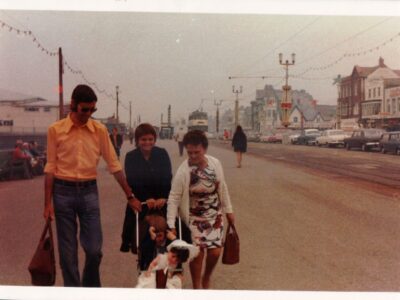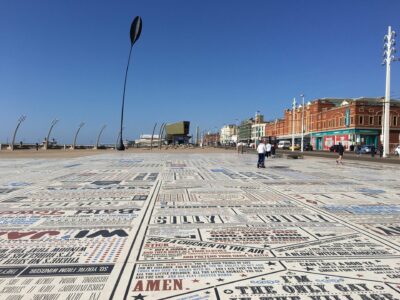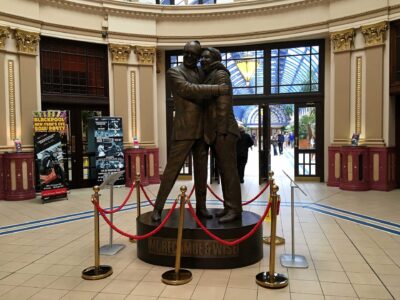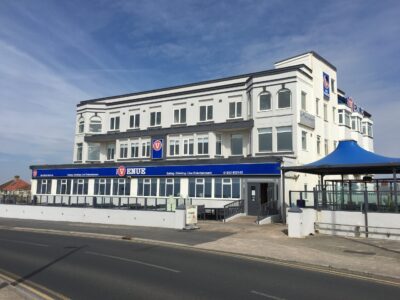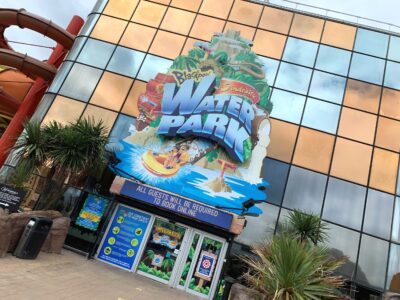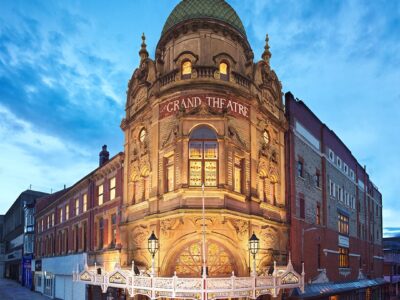On the whole, the Fylde Coast is quite flat. But there’s quite a rise from sea level to the main road at North Shore Cliffs. It makes for amazing views across the sea and lovely cliff-top walks.
Take a look at this look around video, made at the end of the Covid restrictions –
Enjoyed this video? Why don’t you subscribe to our Visit Fylde Coast YouTube channel – make sure you don’t miss out!
Take a look around the North Shore Cliffs Area
Travel north, away from Blackpool North Pier with the sea on your left, and the main road soon rises away from the beach.
- From the Metropole Hotel to Gynn roundabout, the Colonnades of Blackpool North Shore separate the beach and main road.
- Continue north past Gynn roundabout towards Bispham and the drop to the seafront gets even deeper still at North Shore Cliffs.
- See the Cliffs rising in the next video made near Jubilee Gardens – the seafront park near Gynn roundabout.
As you travel along the main seafront road – on the footpath, ride a tram or drive along the main highway – you’re not really aware of the steep drop to the sea. Walk down the steps to the lower promenade and turn to look upwards to the main road. Bet you’re surprised when you look and see how steep it is!
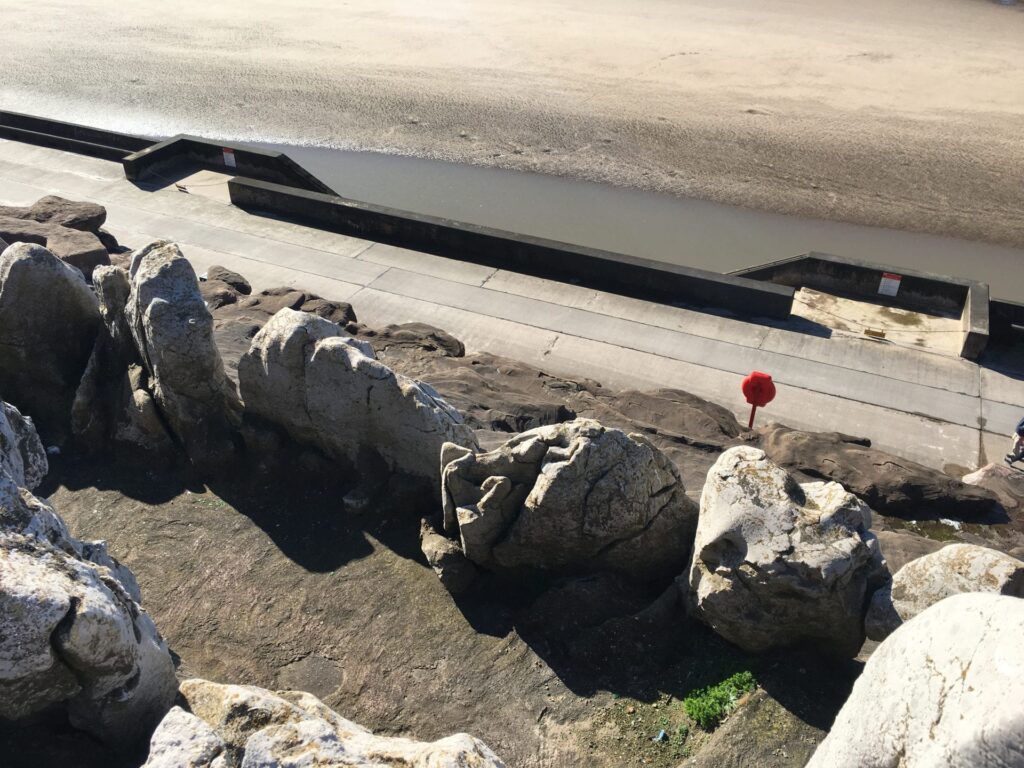
It’s well worth a stroll or a short tram ride away from the bright lights of Blackpools Golden Mile to take a look at the cliffs. Amazing views meet local history with interesting gardens and features when you didn’t expect them.
Then, just as suddenly as The Cliffs began, they flatten out again. Pass the Norbreck Castle and from Anchorsholme, the high seafront tapers out to meet the flat landscape of Cleveleys.
We’ve picked out some of the interesting things – find out much more about them all by following the links to more content.
Amazing Views from North Shore Cliffs
An advantage of this high stretch of coastline between Blackpool North Pier and Anchorsholme is the amazing views.
On a clear day you can see the Lake District to your right, the wind farms out to sea and even North Wales to your left. And the sunsets! Oh the sunsets – every one is different and all equally beautiful.
Other Things to Spot…
There’s an assortment of things for you to find while you’re in the area of North Shore Cliffs.
- Down the slope there’s an art installation, including a concrete whale made in 1977 and various decorative features.
- On the top walkway there are various monuments and memorials to ponder and reflect over as you take your walk.
Pennystone Rock and Carlin Rock
You’re looking out to sea for these things though. Have you seen any of them?
If you’re lucky, you might spot Pennystone Rock at a very low tide, opposite Pennystone Road at Bispham. Sort of opposite the end of Red Bank Road, a little north of the Illuminations arch. You can often see it’s smaller relative, Carlin Rock. It’s even visible at low tide as you drive along the promenade.
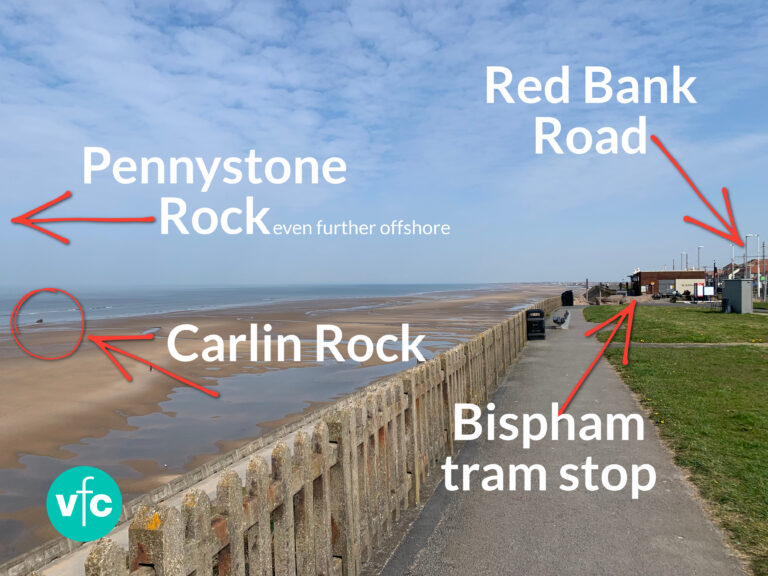
The Pennystone is one of a line of rocks in the Bispham area. They’re all made of hard conglomerate – consolidated shingle that’s too heavy for the sea to move. Most likely the remnants of a long forgotten line of cliffs, only visible at very low water, offshore from Bispham and Norbreck.
Art Installations
Have you seen the whale which lives on the seafront in this area?
Along with the little turrets, arches and paths, they were built by eight young lads and a gang leader. They were on a job creation scheme, which was a bit grim in the middle of winter!
This was during the Queen’s Silver Jubilee year, 1977. And the same year that Virginia Wade won Wimbledon! They were all very popular with children, especially the whale.
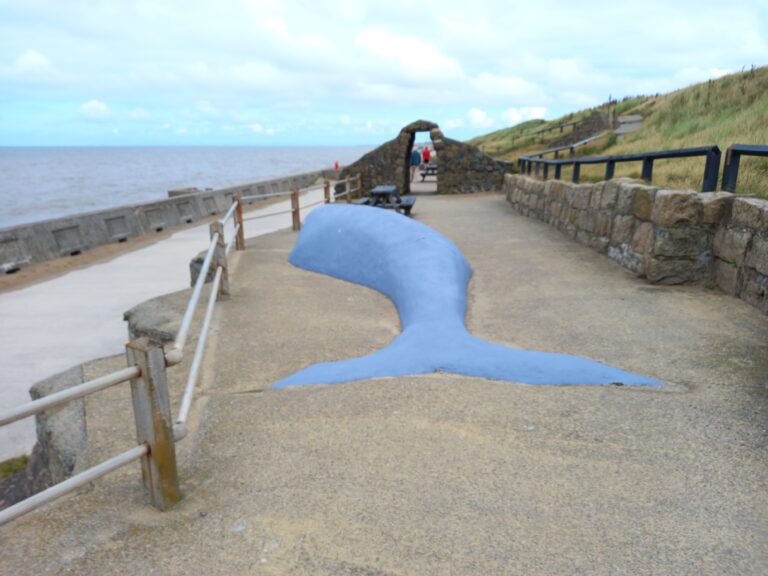
Abana Shipwreck
At low tide on the beach at Anchorsholme (at the northernmost end of Blackpool near to Cleveleys seafront) you can see wood sticking out of the sand. It’s the remains of the Abana shipwreck from long ago.
Depending on the weather, tide and how eroded the beach is, you should be able to see it from the cliffs. Much more about the Abana here
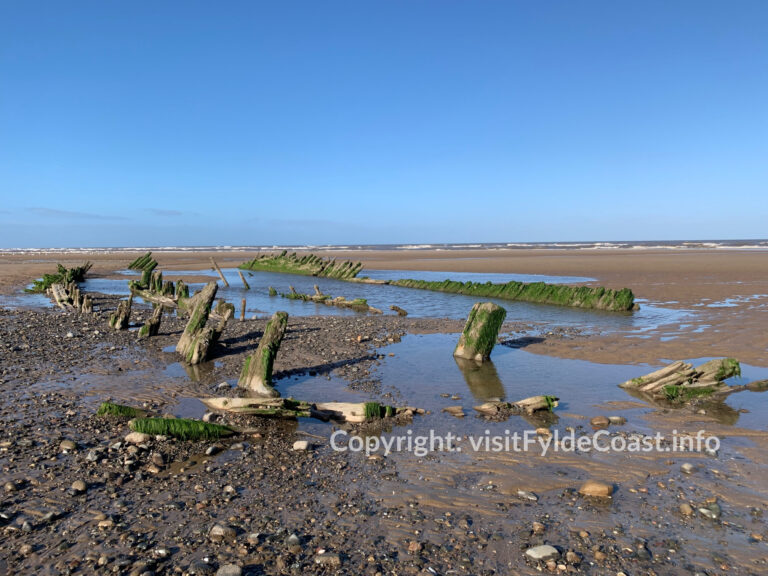
Honeycomb Worm Reefs
Have seen the honeycomb worm reefs at low tide along the beach? You probably have – and wondered what they are! Whether you can see them depends on how high the beach is. The sand levels vary a lot depending on the tides and weather. Calm seas allow the sand to build up while rough, stormy weather washes it away. When beach levels are right you’ll see the reef as a wide, dark brown stripe running lengthways along the beach, near low water.
A tiny 3-4cm worm called Sabellaria alveolata makes these reefs. They’re home to all kinds of invertebrates and small marine animals. In turn they’re food for larger fish and sea birds. Much more about honeycomb worm reefs here
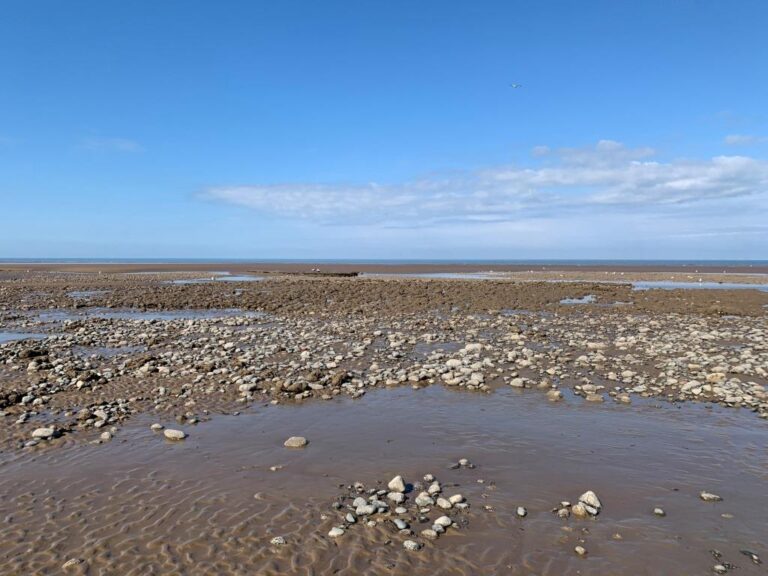
Cliff Lift
In their heyday many British seaside towns installed contraptions for ferrying holiday makers up and down their steep coastal cliffs.
Some towns built funicular lifts where the technology of an elevator (a cable pulling a car up) meets the technology of a railroad (a car on a track). Here in Blackpool, engineers came up with the Cliff Lift.
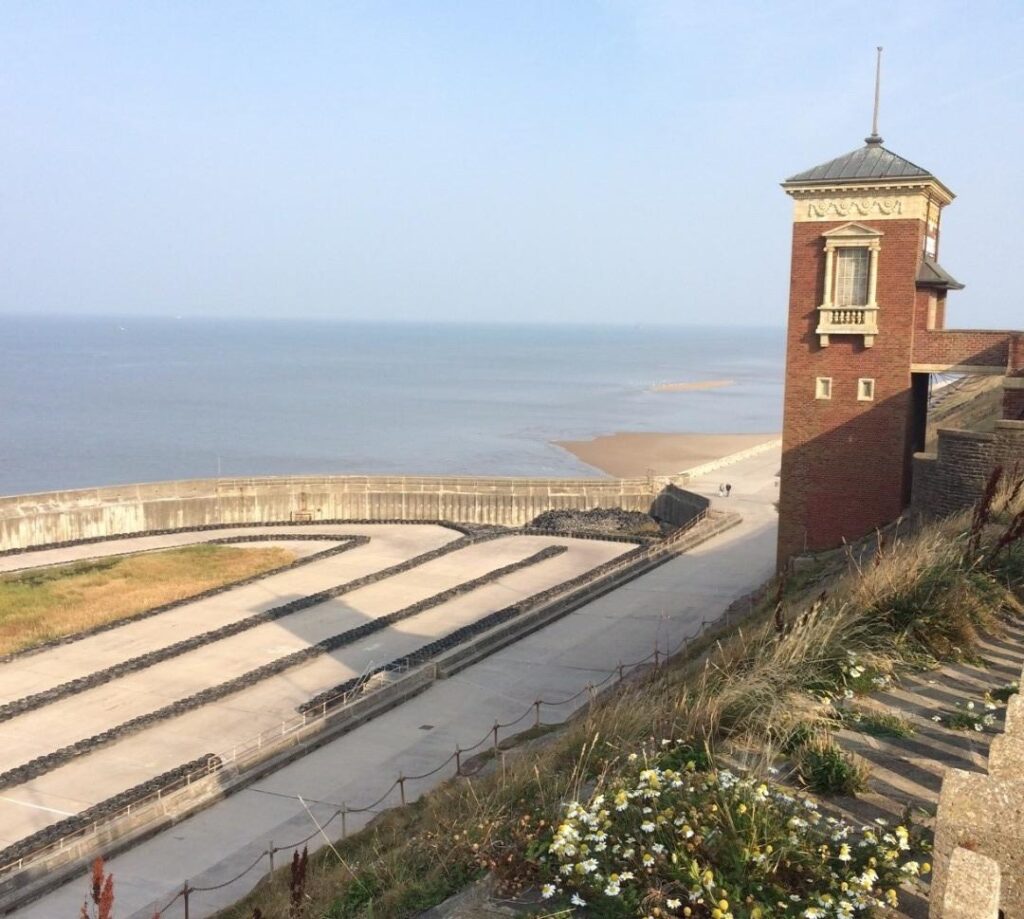
Awarded Grade 2 Listed Building status on 8 March 2010 and originally built in 1930. Externally it looks much the same as it did in its heyday, albeit with a few modifications.
Sadly, it’s now closed, but it’s a handy seafront landmark. Find it right next to the old Boating Pool – the oval headland that sticks out into the sea. That’s now a karting track, but its original use holds fond memories with many of you!
The Rocks of North Shore Cliffs
Obviously it’s a man-made cliff, which is pretty clear to see from the concrete-esque blocks which stop the land from falling into the sea! There’s much more about building the cliff face, further down this page.
Did you know? These man-made blocks of ‘stone’ started out as a landscape created by an innovative company called ‘James Pulham and Son‘?
They were landscape designers in the early 1900s, who specialised in creating artificial stone from Portland Cement. James Pulham & Son were engaged to ‘rockify’ the cliffs of the Coastal Cliff Park between 1922 and 1923.
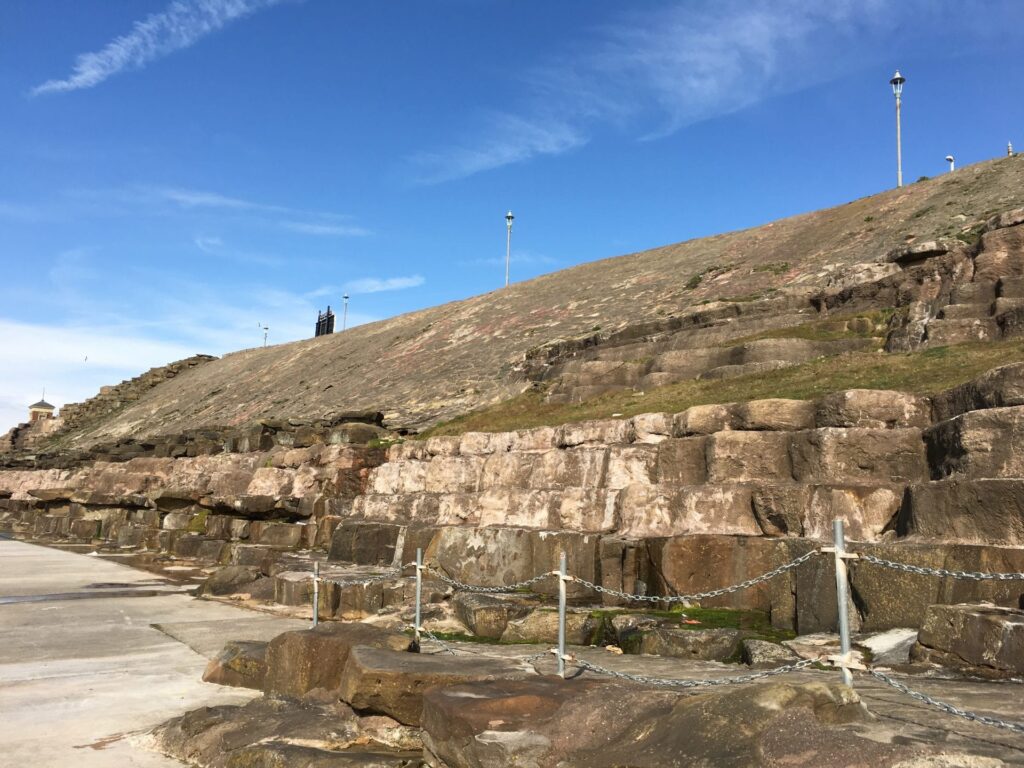
Their ‘Pulhamite’ used a secret mix of cement, poured over brick, clinker, smaller rocks and building rubble. At the time, the mixture made what was seen as a quite realistic rockery landscape. Back in the day, the geological accuracy of their rock formations was one of their main selling points.
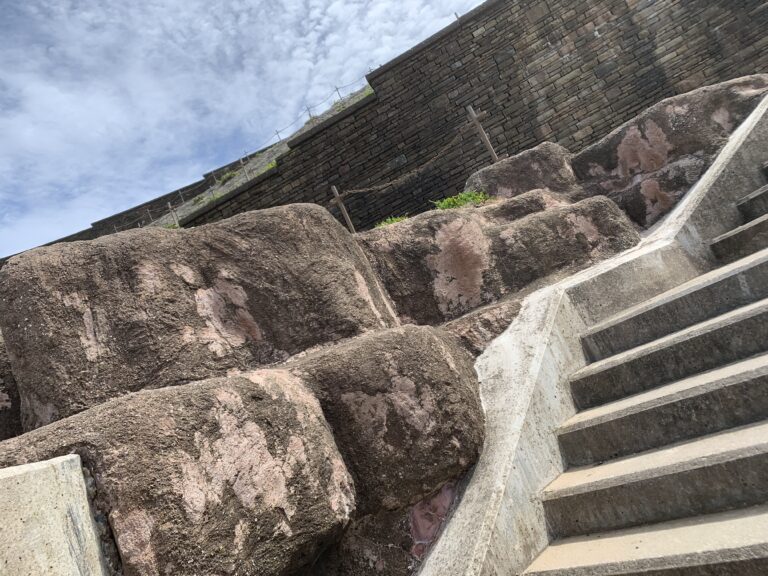
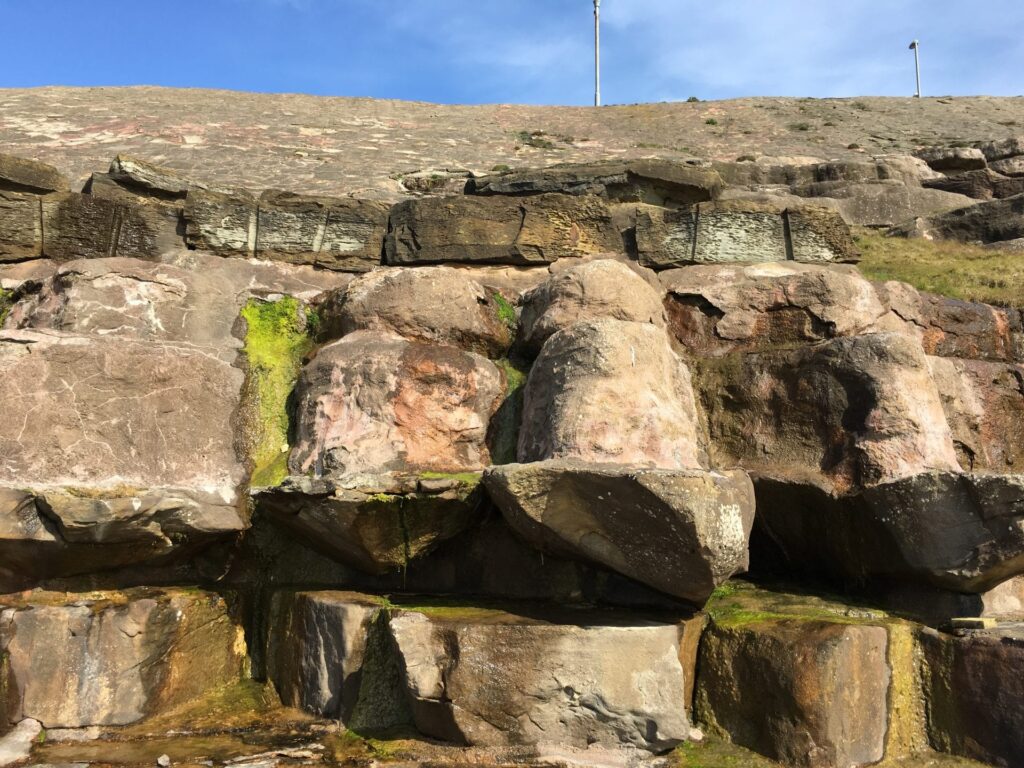
Among many other projects in Lancashire they also completed projects in Ashton Gardens and at the seafront in St Annes (below). When you next visit, watch out for the information boards along the seafront. They’ll tell you much more.
The firm completed gardens and architectural projects all over the UK. They stopped trading at the beginning of the Second World War, although James Pulham IV didn’t die until 1957.
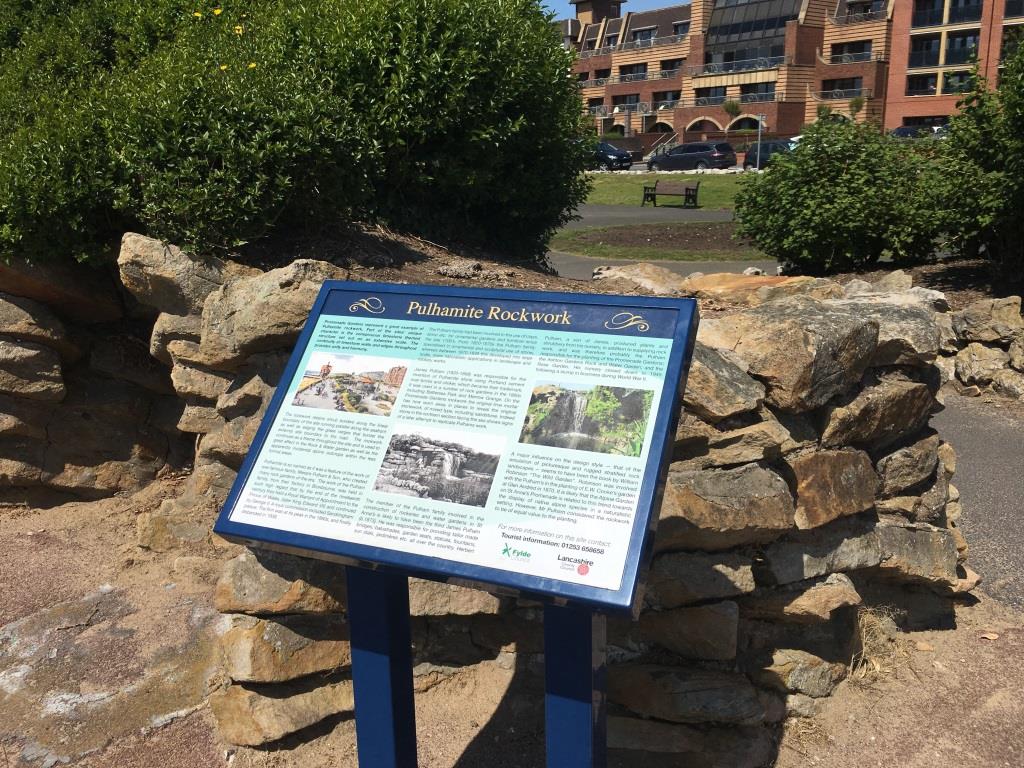
Rockery along Blackpool North Shore Cliffs
Over the years, work continued to extend the rockery northwards along Blackpool seafront. It reached Little Bispham (near the toilets at the seafront tram stop) in the mid 1930’s.
Year in, year out, this section of seafront takes an incredible battering from the weather. So over the years Blackpool Council have carried out their own repairs. Creating their own mix of concrete repairs they have eventually covered most of the original Pulhamite mix.
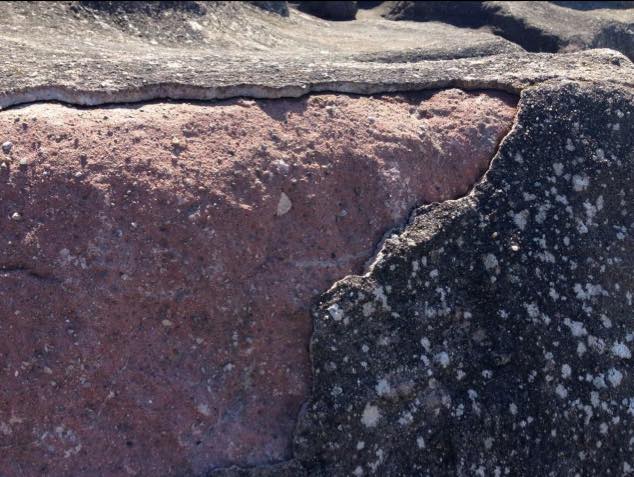
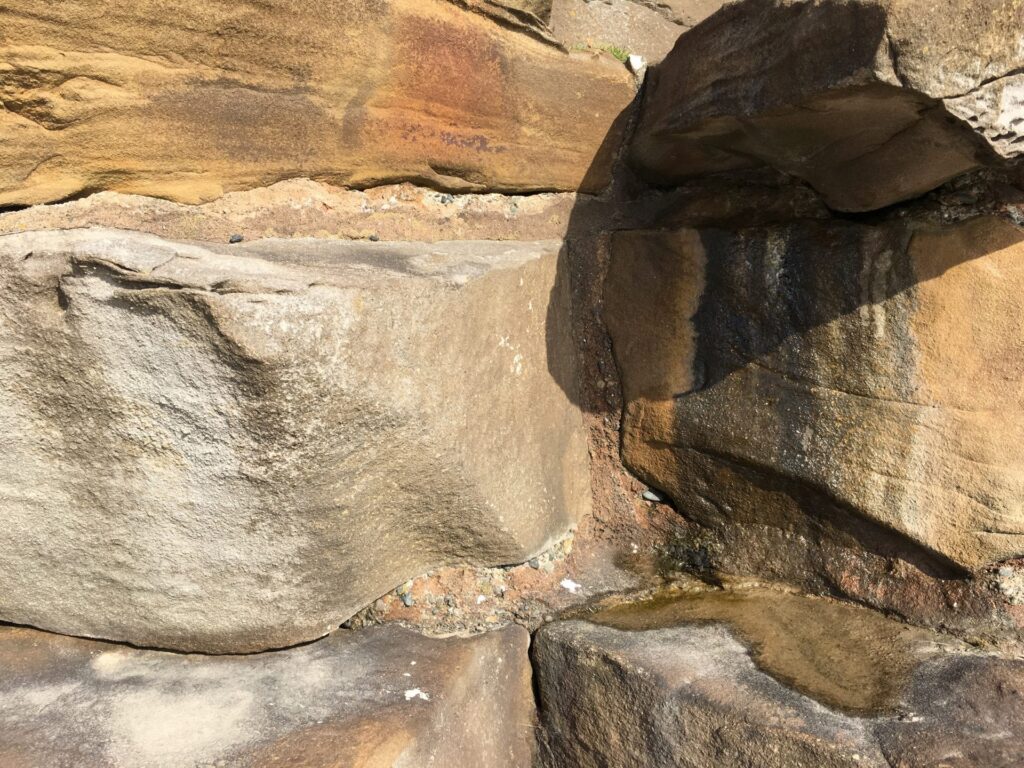
History of North Shore Cliffs
These cliffs are mostly ‘glacial till’. It formed when the 2000 feet thick ice sheet retreated, leaving it and boulder clay behind.
When the ice had thawed, the melt water left the sea 120 metres deeper, all around the world. At this time, the land on which Blackpool and Lytham stand was a collection of islands. Deposited sand then formed cliffs and rims in the deeper valleys. The cliffs at North Shore are some of these, reaching 70 feet in height.
Preventing the Cliffs from Eroding
Since the 1800s we’ve been building artificial defences in response to erosion of the cliffs at Blackpool.
We complain today about sewage pollution in the sea. But would you believe that in 1836, at high tide people were still throwing sewage over the cliffs and into the sea!
In 1895 the first major promenade construction project began in Blackpool. It was a massive undertaking, broken down into eight distinct stages.
Work begins
- Carleton Terrace at Cocker Square to the Gynn was fronted by a 7 foot thick concrete sea wall, dug into the boulder clay. Opened in 1899 at a cost of £144,716.
- By 1905 erosion of the north cliffs had become so bad that people were banned from removing beach material. A Board of Trade Notice was erected, prohibiting removal of gravel and boulders from the bottom of the cliff.
- The stretch from the Gynn to King Edward Avenue was started in 1910 and completed in 1911. Although there wasn’t any piling here in the dense boulder clay, it was built in a similar manner to the earlier wall at Carleton Terrace.
Erosion continues…
In 1911 the Coast Erosion Committee reported that the cliffs at Norbreck were eroding by about 3 yards per year.
- Between 1917 and 1919 workmen built the stretch between King Edward Avenue and Red Bank Road. The 100 foot high cliffs posed a huge problem. The answer was a 12 foot thick concrete wall, sunk 7 feet into the boulder clay. Old tram rails were used instead of wooden king-piles. Many water outlets were included in the wall, to drain the land behind.
- Between 1919 and 1921 Red Bank Road to Arundel Avenue was protected. Here, a re-enforced and stepped concrete apron was built.
- In 1923, a stretch of 100 foot high false cliff was built between the sunken gardens and the new promenade. These were made of ‘Pulhamite’, a cement like artificial render, used to cover real stones.
- The last section to be completed was Arundel Avenue to the northern boundary with Cleveleys – this was between 1932-37.
Other sections of new sea wall
- North Pier to Victoria Pier in 1902
- North Pier to Cocker Street was built between 1910 and 1912.
- Victoria Pier to the Southern boundary was constructed between 1922 and 1926, including a bay for the new open air baths.
- Protecting the town – from the vantage point of North Shore Cliffs
- Going back to the 790’s, tales tell of Vikings beaching their longboats in the small cleft in the cliffs at the Gynn and raiding inland to Poulton.
- In June 1808 King George III’s Preston Volunteers camped on the North Cliffs to prepare for battle against Napoleon Bonaparte’s armies in France.
- And during World War 2, a heavy battery of anti-aircraft guns was positioned on the cliffs near St Stephen’s Church.
While you’re here…
Go to the homepage of the Live Blackpool website for the latest updates.
Love the Fylde Coast? Sign up for your email newsletter. Packed full of interesting things it arrives in your inbox all 52 weeks of the year.
Join us on Facebook at our Visit Fylde Coast Facebook Group and follow us on Twitter @visitFyldeCoast
Plus hundreds of videos to watch on our YouTube channel – from all over the Fylde Coast!
Booking a stay? Pick a safe, clean and legal place to stay, at the very best price. Book with the Visit Fylde Coast and StayBlackpool guide.


